Text
A Great Timeline
Throughout the years of time, art has had the opportunity to grow and progress, while changing the course of history in the process. The advancements in art throughout time, from the prehistoric Paleolithic period until the Late Medieval period in Italy, brought about ways in which both self-expression and identity could be discovered and portrayed through art while also celebrating cultural and religious beliefs.

Beginning at approximately 33,000 to 30,000 BCE in what is considered the Paleolithic Period, some of the first examples of paintings and engravings by humans were created. Covering the walls of the Chauvet Cave in southern France are hundreds of paintings and engravings featuring handprints, geometric patterns, and over 400 representations of different animal species. The prehistoric creators of these works of art scraped their wall canvases clean before utilizing charcoal, manganese dioxide, and hematite to create forms of paint. In a time in which language, ideas, techniques, and cultures were still forming, the paintings of the Chauvet Cave show that the people of the Paleolithic Period respected and valued the beauty of nature. The handprints on the walls provide one of the very first representations of a sense of identity. While it remains a subject of debate, there is the possibility that the paintings of the cave have symbolic and religious importance, and that the art might have played an important role.
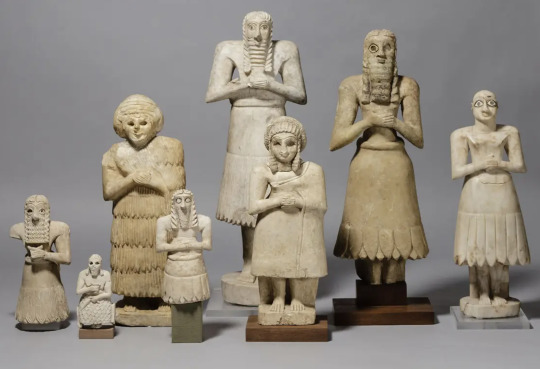
The Sumerian culture of Mesopotamia excelled greatly in forms of art such as pottery, sculpting, weaving, and the creation of large architectural structures called ziggurats. Religious values and beliefs were of extreme importance, something that is reflected in both the artwork and architecture of the Sumerian people. The votive figures known as The Sumerian Worshipers from the Temple of Tell Asmar date from approximately 2900 to 2600 BCE. Crafted from limestone, alabaster, and gypsum, each has its own individualized size and appearance, yet all stand in the same solemn upright stance. The large, focused eyes display the attentive and respectful gaze towards the deities that they believed in and were dedicated to worshipping.
Some of the Sumerian votive figures that have been recovered have names inscribed on them, a portrayal of individuality incorporated with celebrating religious beliefs. The votive figures of this time period are an early example of religious sculptures, an inspiration for the advancements in religious art that were yet to come.
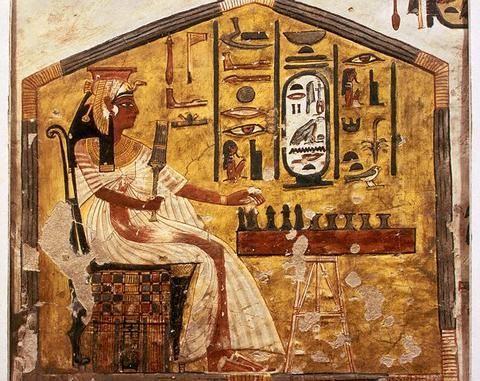
The Egyptian people had a fierce devotion to their rituals and beliefs, especially when it came to the event of death. To the Egyptians, death was not considered to be the end, and a great amount of time went into the creation of individual tombs and coffins to help the deceased on their way to the afterlife. The paintings within Egyptian tombs show the clear devotion that Egyptians had to their rituals and beliefs, and the hopefulness and determination that they had to achieve their goal of eternal life.
Located in Thebes in the Valley of the Queens, Queen Nefertari’s tomb is considered to be the largest, most well-known, and exquisitely embellished tomb of the site. A woman well ahead of her time, Queen Nefertari was very educated and highly active in the diplomacy of her country. In the tomb painting Queen Nefertari Playing Senet dated from approximately 1279 to 1213 BCE, Nefertari is sitting playing the game of senet while dressed in her regal attire. The complicated game involves thirty squares which can help or hinder a player’s progression to winning against their opponent. When shown in a tomb, the squares symbolically correlate to the assistance or threats that a person might face while on their way to the afterlife. Nefertari is shown playing senet alone, illustrating her independent struggle and fierce determination to win on her journey through life and achieving immortality.

Known for their Classical art and emphasis on honoring gods or the achievements of rulers, the Greeks could at times focus on softer, more personal art. To honor their dead, the Greeks would use stone slabs called stelai (singular is referred to as stele) and carve images of the person to be remembered for use at the burial site in the cemetery. Marble grave stele of a young woman and servant circa 400 to 390 BCE portrays the typical Classical Greek style, but in a more intimate way. A woman is shown leaning in a pose potentially inspired by Aphrodite. Standing beside her with a jewelry box is a younger, smaller girl with her hair cut short in mourning. There is a tenderness between the two, insinuating that there is a possibility that they are sisters rather than mistress and servant. The Greek people were able to show individualized depictions of lost loved ones, while still honoring their gods and cultural beliefs in regard to death.
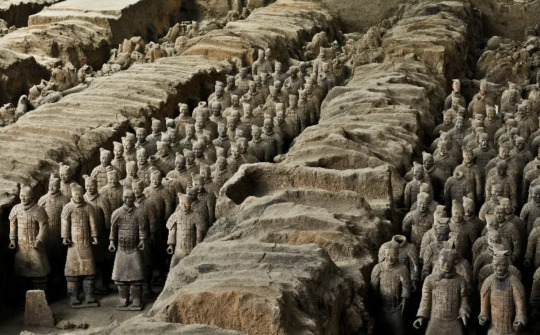
The Qin Dynasty ushered in China’s first emperor, Shihuangdi. Shortly after taking over the throne, Emperor Shihuangdi began the construction of his large tomb which took almost four decades to complete. Though the tomb blends in with the lush natural landscape from the outside, the inside consists of several thousand terracotta soldiers complete with 100 wooden chariots. The soldiers stand ready for battle, some with remaining traces of bronze or wooden weapons. Each soldier has a similar yet different face, with each having slightly unique and abstracted physical or facial features. Emperor Shihuangdi is said to have had hundreds of thousands of men in his army that protected his empire. Even in death, his terracotta soldiers proudly and symbolically stood to guard and protect their ruler and his final resting place. The Chinese were exceptionally skilled and achieved great artistic and technological advancements that have been beneficial contributions to the world. Shihuangdi’s mausoleum of soldiers brings the cultural belief of protecting the spirit into an exceptionally lifelike and artistically revolutionary portrayal.
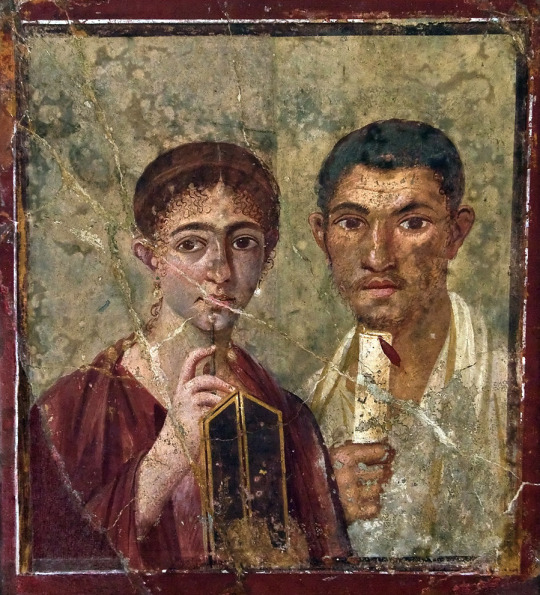
Portrait of a Married Couple (Terentius Neo and Wife) from approximately 75 CE illustrates the advancement of personal portraits in the era of Imperial Rome. Instead of the ideal proportions and features of the Classical style, the lineaments of the couple are extremely lifelike. From the spacing of the eyes, to the shapes of the ears and mouths, it is safe to assume that this wall painting resembles what the pair would have looked like in actuality.
Not only do the physical characteristics of the pair create a more personalized work of art, but the objects that they hold in their hands also signify even more about them in a subtle way. Terentius Neo holds a scroll, displaying his academic achievements. His wife holds a writing tablet with a stylus, demonstrating her abilities to read and write. This portrait is of two educated individuals that were proud of their accomplishments and were able to express it through art. It is also worth noting that this portrait shows a wife at the same level as her husband, something relatively rare for the time period. Rather than being painted smaller in the hierarchal scale or shown without her writing utensils, she was shown as the intelligent and equal woman that she was.
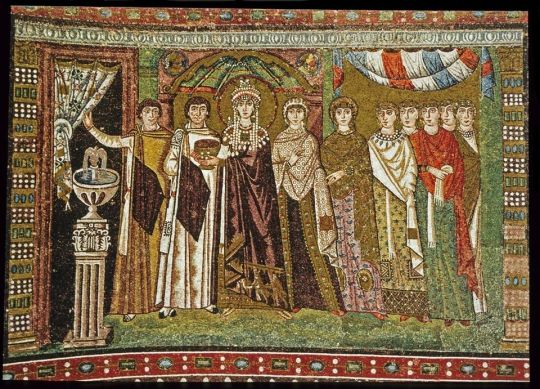
In the Basilica of San Vitale located in Ravenna, Italy, the south wall of the apse features the impressive mosaic Empress Theodora and her Attendants from the year 547 CE. San Vitale contains some of the largest, most intricate, and best-preserved mosaics of the Early Byzantine period. While Emperor Justinian was an avid church builder, Empress Theodora was the main driving force behind the design and construction. Her place in prominent artwork that mirrors the mosaic of Emperor Justinian and his Attendants, located on the north wall, displays both her regal importance and influence. Dressed in royal purple with a nimbus around her head to symbolize her power, Empress Theodora is shown bringing offerings to Jesus Christ.
The mosaics throughout the Basilica of San Vitale follow the theme of offering, something of great importance to the Christian religion. Empress Theodora and her Attendants, along with the other mosaics of San Vitale, portray self-expression and identity as well as the high regard that religious beliefs were held.

Considered to be “the first great monument of Islamic art,” the Dome of the Rock was created at the location where Muhammad is said to have been lifted to Heaven. The rock is also believed to be the site in which God created Adam, the place in which Abraham was commanded by God to sacrifice his son, as well as the location of the temple of Solomon. While it is of great importance to the Muslim people due to Muhammad, it also is significant to those of the Jewish and Christian faiths as well due to these other biblical stories. Completed in 691, the Dome of the Rock is the Islamic religion’s way of honoring itself and its beliefs through architecture. With its beautiful marble detailing and stunning glass mosaics combined with Byzantine style, it stands tall as a way to honor the triumph of the Islamic religion. The Dome of the Rock serves as a reminder of the unique connections between different religions and remains a very holy site to this day.

The mid 11th through the 12th centuries brought about the introduction of Romanesque art. Quite literally meaning “Roman-like,” this style of art took inspiration from Roman art while also merging other artistic and local styles and traditions to form something all its own creation. Hildegard of Bingen’s book paintings are a great example of the Romanesque style. As a very young child, Hildegard was said to have begun receiving holy visions from God. She began recording these visions, creating books filled with words and powerful images. The Universal Man illumination from Liber Divinorum Operum circa 1165 shows the rare self portrait of Hildegard herself. Seated at the lower left-hand corner, Hildegard is shown recording the vision of the man. This sense of identity and self-expression in what is considered a holy artwork is revolutionary, especially for a woman of the time.
Taking inspiration from the Romans, the man shows ideal proportions and appears to be at one with the world. At the very top, we see the head of God above his creation of man. The Universal Man shows immense similarities to Leonardo da Vinci’s ideal proportioned Vitruvian Man three centuries or so later, and captures how Roman artistic influences have continued on throughout time.
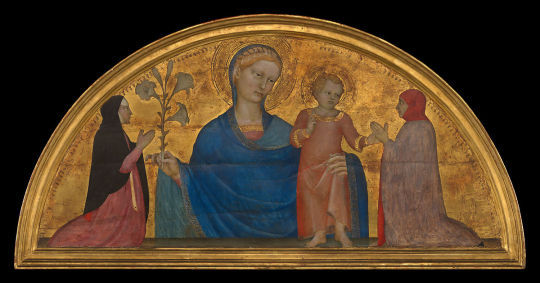
Italy in the 13th century faced political problems as the Holy Roman Empire fought to maintain full control. Many individuals, particularly those of higher classes, commissioned art with religious themes to show their dedication to the Church and to their faith. Late Medieval Italian art such as Giovanni da Milano’s Madonna and Child with Donors from the year 1365 exhibits a couple being welcomed into Heaven by the Madonna and an infant Jesus Christ. Most likely set above a tomb, the donors were able to honor their religious beliefs even after death. The tempera on wood painting with gold ground may portray flatter and more two-dimensional figures, but the symbolism is as bold as ever. With hands clasped in prayer, the couple celebrates their faith through art while incorporating themselves into it.
In conclusion, the evolution of art has been both noteworthy and largely significant. What began in the Paleolithic Period as simple paintings and engravings of animals and geometric shapes on the walls of caves led the way to more individualized and self-expressive works of art. From the embellished tomb walls of the Egyptian New Kingdom, the defensive Qin Dynasty’s terracotta soldiers, the lifelike and symbolic wall portrait paintings of Imperial Rome, the mosaics of Byzantine churches, to the first Islamic architecture all the way to Late Medieval Italy’s portrayals of real people devoted to their faith. Each time period brought about some sort of change in the history of art and incorporated ways in which both self-expression and identity could be discovered and portrayed while also celebrating cultural and religious beliefs.
0 notes
Photo
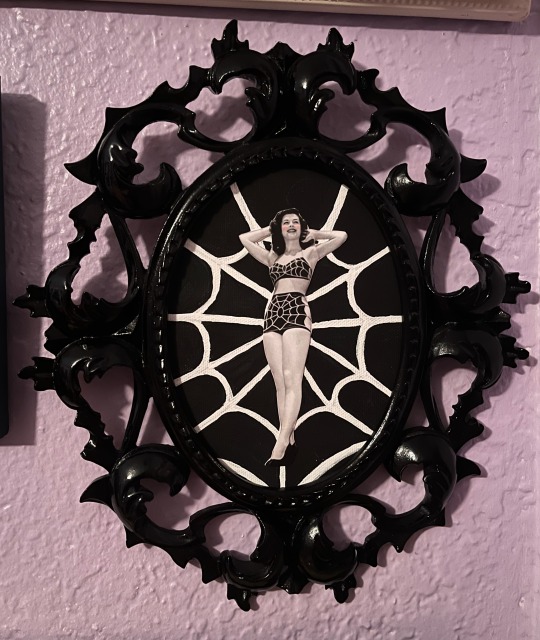
The original Web Weaver was something I painted in 2017 at a very challenging time in my life in which I was truly at my lowest point. Now in a much happier and healthier mindset, I decided to create Web Weaver Reformed by upgrading my original and bringing it to its fullest potential. This artwork symbolizes my growth and advancement in the web of life that I have woven, and incorporates the dark vintage flair that I love and am known for.
Documentation:
1. The original artwork with my signature on the back.
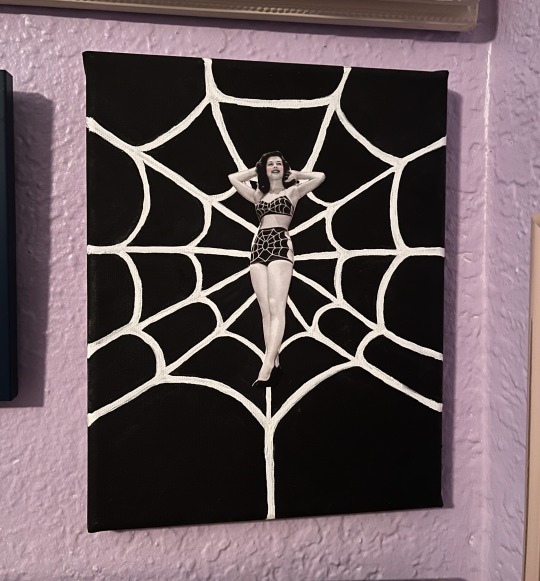

2. Vintage picture frame that originally contained a mirror. I found it beautifully ornate and loved the curves.

3. Determining the size in which I need to cut the original.

4. Initial cut out from the canvas.

5. Final cut out.

6. Before spray painting the frame.

7. During the process of spray painting. Three coats were eventually applied.
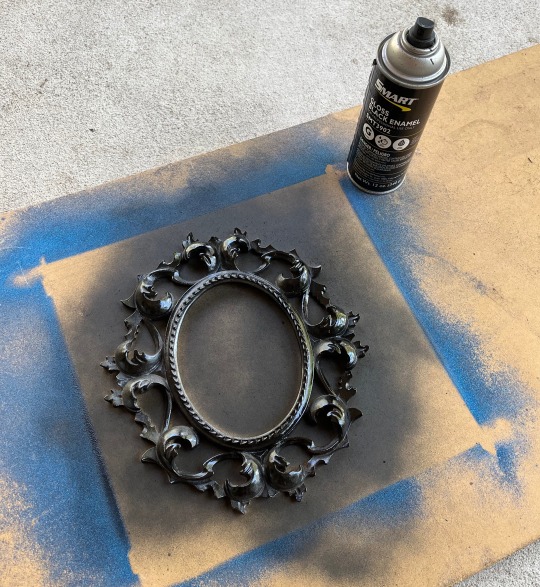
8. Final product.

0 notes
Text
Virtual Sketchbook 4
Part 1:
Jackson Pollock was a true rebel in the 20th century art world. Though he originally studied under Thomas Hart Benton, an artist known for his rather realistic portraits and landscapes, Pollock felt compelled to defy what was considered the traditional and appropriately correct style of painting.
In the 1940s and 1950s, America was really coming into its own and was presenting a very structured, conformist, “All-American” appearance when it came to visual art and advertisements. Rather than following that mainstream style, Pollock marched to the beat of his own drum. His paintings reflected a controlled spontaneity and were completely unique for the time period. Instead of using a traditional paintbrush, he chose to use sticks, knives, string, trowels, and various other tools when painting his art. His utilization of the “drip” technique was something unheard of at the time, and it gave him the opportunity to make each work of art completely different from the next in a completely new style.
Jackson Pollock is quoted as saying, “every good painter paints what he is.” Instead of painting what he saw, he painted what he felt and what he was...different than everyone else.
Part 2:
My abstract, non-representational artwork is inspired by my father as I approach the 5 year anniversary of his death.

0 notes
Text
Virtual Sketchbook 3

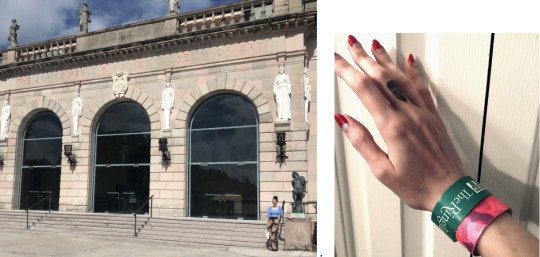

Upon entering the Ringling Museum of Art’s gallery titled “The Age of Rococo,” my eye was immediately drawn to the beautiful French Rococo painting Portrait of Madame de Bourbon-Conti as Venus by Noël-Nicolas Coypel. Painted 291 years ago in the year 1731, this oil on canvas painting stands just over five feet tall and remains as vivid as it was almost three centuries ago when Coypel first created it.
At the tail end of the Baroque era, Rococo brought a dramatic yet lighthearted feel to the subjects of its art. Aristocratic portraits were created in a more whimsical manner, a perfect example being that of Coypel’s Portrait of Madame de Bourbon-Conti as Venus. With her depiction of graceful beauty and her surrounding cherub companions, one of whom holds an arrow reminiscent of Cupid with his arrow of love, my first immediate thought prior to even looking at the title is that this woman of noble origin was being portrayed as Venus the Goddess of Love. Portrait of Madame de Bourbon-Conti as Venus has a lovely sense of balance in which the noblewoman is surrounded on each side by a cherub as well as nature including trees, clouds, and water surrounded by mountains in the distance. The fabrics of her dress are cascading and appear to have the luxurious sheen of silk. The array of flowers including roses, irises, and ranunculus in her hair and draped across her chest are in a beautiful full bloom. The delicate pastel tones of pink, blue, and white throughout the entire painting all bring a playful yet elegant feel typical of the Rococo style.
When viewing Portrait of Madame de Bourbon-Conti as Venus up close, it was difficult to overlook the mischievous expression and twinkle in her eye. I couldn’t help but to be intrigued by this woman. What exactly was the story behind her? In my research, it was learned that the subject was that of Louise Élisabeth de Bourbon, Princess of Conti. Born into a regal life in Versailles, Louise Élisabeth de Bourbon was known for her beauty, her wit, and for her charming yet flirtatious behaviors. She was one of the belles of the Court of Versailles, known for being a subject of both gossip and admiration. After being married off to her cousin Louis Armand II de Bourbon, Prince of Conti in 1713, her life changed. An unhappy and occasionally violent marriage ensued due to the ill-mannered, ugly tempered prince in which she voiced publicly that she wanted to leave and fueled his rage by conducting numerous affairs. When the Prince unexpectedly died in 1727, the Princess of Conti finally had her freedom. Portrait of Madame de Bourbon-Conti as Venus was finished only four years after the prince’s death, and based on the portrayal, it is obvious that his death was not an occasion that was mourned but rather celebrated. The Princess was able to resume being her charismatic self, both giving and receiving love and devotion to others, just like the goddess whom she is portraying.
I chose this painting because I knew before even conducting any research that the main subject was someone with an interesting narrative. Portrait of Madame de Bourbon-Conti as Venus is an important piece to the world because it subtly tells the story of freedom of one of the “bad girls” of history in a style of art that is still influential today.
0 notes
Text
Virtual Sketchbook 2
1. The Principles of Design:
Unity- Portraying a consistent, harmonious, and overall sense of oneness in the appearance of a piece of artwork.
Everyday life example: My kitchen cabinets are symmetrically placed next to each other and attached to the wall. They are all the same size, the same shade of light brown, and feature the same round handle.
Variety- The opposite of unity; portraying assorted styles or elements in a piece of artwork.
Everyday life example: My burlesque outfits and props are together in one room, yet are all different colors and styles. Robes, gowns, and skirts of diverse colors, lengths, and materials hang next to each other while various headpieces of feathers, rhinestones, and other elements adorn the shelf above.
Balance- Stability in a piece as a whole. Can be symmetrical with each side being nearly identical, or asymmetrical in which they are not close to being identical.
Everyday life example: When I draw on my winged eyeliner, I always try to make the left eye symmetrical to the right eye for an overall balanced appearance.
Emphasis & Subordination- Bringing attention to a particular area of a piece while making other areas unnoticeable and not distracting, in order for the focus to remain on the emphasized focal point.
Everyday life example: My front door is painted a bold red whereas the rest of the house is a light, neutral color that brings focus immediately to the door rather than anywhere else.
Directional forces- Lines in a piece in which the viewer’s eyes follow, whether they are actual or implied.
Everyday life example: The lines on the top and front of my antique roll top desk are bold actual horizontal lines.
Repetition & Rhythm- Visual parts of a work of art that are seen more than once and that might have different variations, but blend well together.
Everyday life example: One of the walls in my home I have decorated with framed taxidermy butterflies and moths. They are all similar yet completely different, and provide a beautiful array of size, color, and species.
Scale & Proportion- The sizes in a work of art and how they relate to each other and on their own.
Everyday life example: When I leave a cardboard box out for my cats, one of them likes to squeeze herself into it though she knows it’s much too small. It’s amusing to see a chunky cat in a box that is two sizes too small for her to sit in comfortably, and makes for an adorable photo.
2. Figure 2.17, page 30. Frida Kahlo, The Broken Column

The Broken Column contains a significant focus on horizontal lines, neutral and subdued colors, spatial depth, and symbolism.
The horizontal lines in the background that depict the horizon line and the cracks in the earth all correspond with the horizontal lines of the structural corset, strong shoulders, and bold eyebrows bestowed upon Kahlo’s interpretation of herself. Spatial depth is utilized, in which Kahlo stands closely to the viewer front and center while alone, with a shattered and cracking landscape behind her that veers off into the distance. The neutral and subdued colors in shades of brown, black, white, blue, and green, are quite opposite to many of Kahlo’s other works, which include bright colors representational of her Mexican heritage. The color choices might reflect a melancholy mindset for Kahlo, rather than the passionate one used to create many of her bolder pieces. Symbolism is very prominent in The Broken Column, which depicts Kahlo’s severe pain from a traffic accident that she endured throughout her life. The solo figure on a vast stretch of land represents her feelings of loneliness, while the nails pressed throughout her body portray the feelings of constant, chronic pain. Her calm expression yet flowing tears show that she quietly yet resiliently lives a life of physical torment. The blatant bareness of her body with the restricting corset and column inside her body symbolizes the uncomfortable truth about what was going on in Kahlo’s mind, body, and soul at the time of this painting.
3. When I was 19, color drastically changed my appearance and altered my style into what it is now. I was a natural blonde for my first almost two decades of existence, with wavy fair hair that curled down to my waist. I spent most of my life as a light eyed blonde, looking similar to so many others, especially in the beach location of Fort Lauderdale.
Then one day, I discovered who Bettie Page was. Her confidence, her style, her influence, and her appearance were everything I wanted to be. I picked up a pair of scissors, hacked off that mane of gold, and colored it a rich, dark black. Being the person that I am, I didn’t want just ordinary black hair. I desired a shade of black with a hue of an intense, rich blue, that when reflected in the sunlight depicted a color like the wings of a raven. Here I am almost a decade later, religiously coloring my hair the same shade of deep blue-black every three or so weeks to make sure it never appears dull. My hair defines my look, and I’m known for my alabaster skin, light eyes, and hair as dark as night.
If I had to choose a “color scheme” for my life, it would probably be the palette that ranges from blue into green. My eyes tend to change color with how I’m feeling. On a good day they are their usual blue tinted with green which reflects an almost turquoise mixed with aquamarine. When sad or filled with tears, they’re immediately the palest shade of blue. When angry, they’re completely green in which my boyfriend Lorenzo refers to me as the “green eyed monster.”
4.


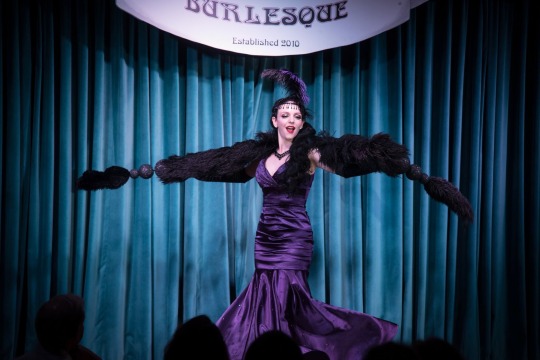
5. Black and White vs. Color Photography

Bunny Hartley Casting a Shadow on Her Face by Horst P. Horst. Photograph, 1938.

Muriel Maxwell Reflected Around a Column by Horst P. Horst. Photograph, 1940.
The choice of black and white vs. color is motivated by a number of factors including the emotion that is meant to be conveyed, the purpose of the photo itself, and the aspects of the photo's composition such as subject placement and lighting. Both black and white as well as color can definitely influence the way that you are feeling or looking at the subject.
For example, in the photo Bunny Hartley Casting a Shadow on Her Face, the usage of black and white emphasizes the dramatic shadows throughout the picture and provides an almost eerie or spooky mood. In the photo Muriel Maxwell Reflected Around a Column, the bold use of color brings emphasis to the very balanced symmetry and the clothing in the photo. Horst P. Horst, the photographer of both pictures, was well known for his fashion photography. Both of these photos were at some point in fashion magazines such as Vogue, and were designed to be both artistic as well as have the ability to appeal to consumers. Both are extremely eye catching, and if the colors had been reversed, they might not be as vivid as they are now.
0 notes
Photo

1. The artwork I was assigned is Jackson Pollock's "Autumn Rhythm (Number 30)", circa 1950. When I first looked at it, I saw a canvas full of frazzled lines clustered and thrown about in various shapes and sizes. It reminded me greatly of how the mind can feel when it is overwhelmed or anxious, and ultimately not in control.
Jackson Pollock became known in the late 1940s for his "drip paintings," which involved dripping and flinging thin enamel paint onto a canvas that was laid out flat on the ground.
This particular painting gets it's name from the month that Pollock painted in, which was October.
At the height of his fame, Pollock began to give his paintings numbers rather than symbolic titles, as he felt that they could be misleading.
"Autumn Rhythm (Number 30)" involved the use of tools such as knives, trowels, and sticks rather than paint brushes to build up the line compositions.
This piece is on view at the Metropolitan Museum of Art, who acquired it in 1957, one year after Pollock's sudden death in a car accident due to being drunk behind the wheel.
After learning a bit more about Jackson Pollock's life and personality, I began to see this painting as being more of a controlled spontaneity rather than my initial perception of frantic, frazzled, and unpredictable. Pollock was like a choreographer when it came to wielding his tools to create his lines, and he was quoted as saying, “Every good painter paints what he is.” When I now look at this specific piece of art after reading that quote, I see that Pollock truly did paint exactly what he was... different! His "drip" technique was out of the norm for the art world at the time, and he was able to show that his works of art were completely unique, and while it may not look like it to some, he had complete control over his in action painting methods.

2. This painting was gifted to me in 2018 by my dear friend of over 20 years, talented painter and tattoo artist, EV Talesman. It was created with watercolor and paint markers on watercolor paper. It decorates my wall that I look at daily, and is a reminder of our friendship. I find it to be truly beautiful because of its sentimental meaning, as well as its use of color and its strong homage to the style of American traditional tattoos, my personal favorite.
3. My name is Marina, and I’m what you would consider to be a “visual time traveler.” I work in the vintage clothing world, and dress up on a daily basis in items primarily from the 1920s to the 1970s with a heavy influence on the 1940s and 1950s. I’m also a traveling burlesque performer of over seven years, and specialize in 1930s style feather fan dances like Sally Rand (my cat is named after her, by the way). A born and raised Florida girl, I’m so fair skinned that people don’t often believe me when I say that I grew up on Fort Lauderdale beach. I’m 28 going on 108, and have always felt much older beyond my physical years.

4. Self Portrait at the Wonder House, 2022, Photograph
0 notes